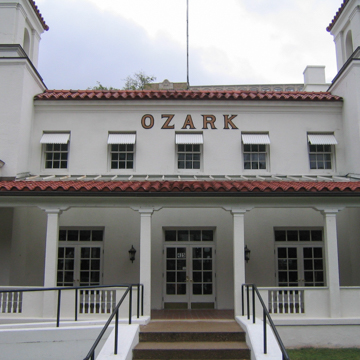The Ozark Bathhouse was one of the last of the large bathhouses built on Bathhouse Row. The two-story building is a five-part composition with a recessed central portion between two square towers and end wings; it is finished in stucco and has a red tile roof. Its design is basically Spanish Colonial Revival, though with a more plain character than the Quapaw Baths and Spa (GA5), and the several horizontal bands that wrap the building along with the curved end wings add a slight Art Deco flavor. The central lobby continues the traditional bathhouse design of marble hallways leading to men’s facilities in one direction and women’s in the other. Closed as a bathhouse in 1977, the building reopened in 2014 as a cultural center.
You are here
Ozark Cultural Center (Ozark Bathhouse)
If SAH Archipedia has been useful to you, please consider supporting it.
SAH Archipedia tells the story of the United States through its buildings, landscapes, and cities. This freely available resource empowers the public with authoritative knowledge that deepens their understanding and appreciation of the built environment. But the Society of Architectural Historians, which created SAH Archipedia with University of Virginia Press, needs your support to maintain the high-caliber research, writing, photography, cartography, editing, design, and programming that make SAH Archipedia a trusted online resource available to all who value the history of place, heritage tourism, and learning.


